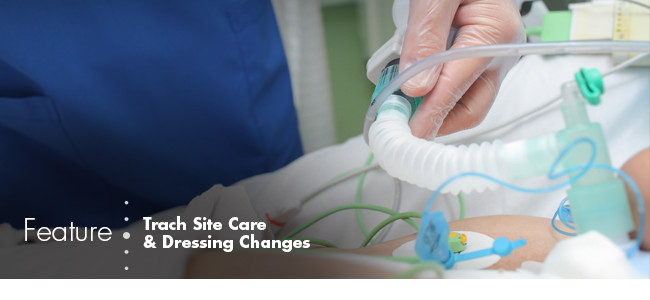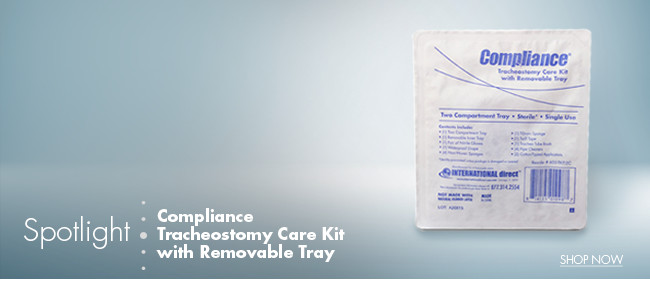 |
 |
| |||
|
Tracheostomy dressing changes promote skin integrity and help prevent infection at the stoma site and in the respiratory system. Typically, healthcare facilities have both formal and informal policies that address dressing changes, although no evidence suggests a particular schedule of dressing changes or specific supplies for secretion absorption must be used. On the other hand, the evidence does show that:
Dressing the site At least once per shift, apply a new dressing to the stoma site to absorb secretions and insulate the skin. After applying a skin barrier, apply either a split-drain or a foam dressing. Change a wet dressing immediately. Securing the trach tube Use cotton string ties or a Velcro holder to secure the trach tube. Velcro tends to be more comfortable than ties, which may cut into the resident’s neck; also, it’s easier to apply. The literature overwhelmingly recommends a two person technique when changing the securing device to prevent tube dislodgment. In the two-person technique, one person holds the trach tube in place while the other changes the securing device. Review trach tube policy and procedures To achieve positive outcomes in residents with trach tubes, keep abreast of best practices and develop and maintain the necessary skills. Always perform trach care needs based on facility protocol. To learn more contact you ProMed territory manager, give us a call at (800) 6548-5190 or visit us online at promedsupply.com. Reference Tracheostomy care: An evidenced based guide to suctioning and dressing changes. American Nurse Today . Excerpt from http://www.americannursetoday.com/article.aspx. Published July 2011 Vol.6 No. 7. Accessed December 2, 2015. |
 |
 |
|
The Compliance® Tracheostomy Care Kit with Removable Tray contains all of the necessary items to clean and care for tracheostomy sites. This kit is compact offering easy storage and is a great solution in maintaining infection control. Additional features:
|
 |